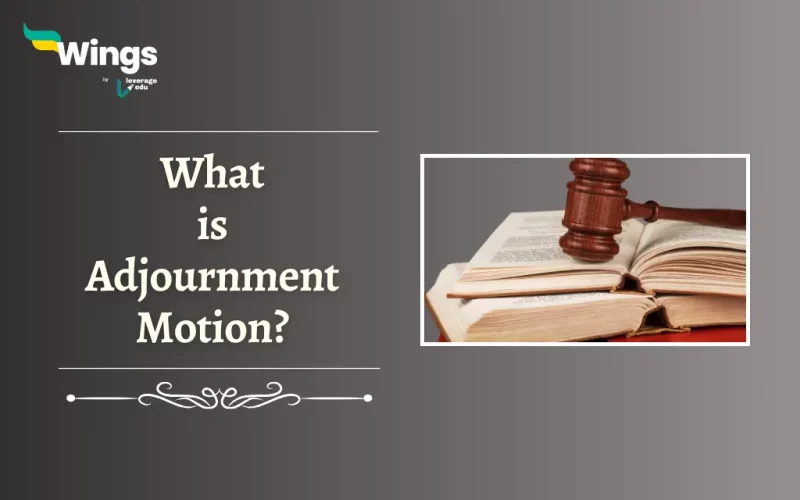An Adjournment Motion is a special device of parliamentary proceedings which brings a particular issue of urgent public importance to the immediate attention of the House. Furthermore, it essentially disrupts the normal agenda of the House to discuss matters of public importance at once. Additionally, the Adjournment Motion is an extraordinary step because it gives importance to a single issue over the planned business. This blog also includes the Adjournment Motion in Parliament, the Rules of Adjournment and a recent Adjournment Motion Example in the Parliament.
What is Adjournment Motion in Parliament?
Table of Contents [show]
Adjournment Motion in the Indian Parliament, the Lok Sabha and Rajya Sabha members use it as a device to highlight a recent event with serious consequences that demands the particular House’s immediate attention. Moreover, since regular motions or resolutions have a longer notice period, which does not handle the urgency of the situation, the Adjournment Motion in Parliament comes into use.
Furthermore, the Purpose of the Adjournment Motion is to:
- Draw attention to a critical issue.
- Moreover, prompts a discussion and potential action from the Government.
- Hold the Government accountable, especially if the issue relates to ministerial conduct or negligence.
Also Read: What is a Writ of Prohibition?
What are the Rules of Adjournment?
Here are the Rules of Adjournment:
- The submission of all notices must be to the Parliamentary Notice Office.
- Moreover, a member of parliament can submit only one notice for a single sitting.
- If a notice has the signatures of multiple members, it is considered to have been given by the First Signatory.
- Voting takes place to determine the priority of notices on the same subject for a particular sitting.
- Additionally, every notice must be in written form.
- Adjournment Motions are usually not considered on the day of the President’s address.
- Notices for that day are treated as notices for the next sitting.
- It is to be noted that to be admitted, a notice requires the support of at least 50 members.
- Lastly, before deciding on the admissibility of a motion, the Lok Sabha Speaker may read out the notice, listen to a brief statement of facts from the Minister or concerned members, and then make a decision.
Also Read: What is a Writ of Certiorari?
Adjournment Motion Example
In early February 2024, Congress Lok Sabha MP Manish Tewari brought forward an Adjournment Motion in the Lower House, calling for a discussion on the India-China border situation.
- Tewari highlights the constant border clashes between the two countries since 2019, thus stressing the urgency of addressing this issue.
- He proposed the suspension of regular proceedings to focus on the escalating tensions, consequently emphasising incidents of Chinese PLA soldiers confronting Indian shepherds.
Related Blogs
Lastly, we hope you liked our blog and gained an understanding of What is Adjournment Motion. Moreover, you may even read more blogs and empower yourself with knowledge regarding Civics and Polity!
 One app for all your study abroad needs
One app for all your study abroad needs















 45,000+ students trusted us with their dreams. Take the first step today!
45,000+ students trusted us with their dreams. Take the first step today!
